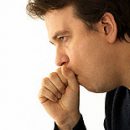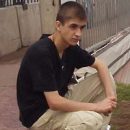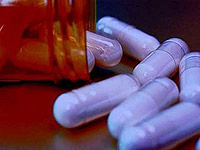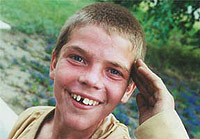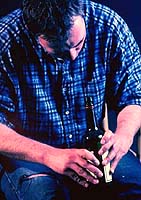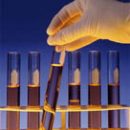Very many people in modern Russia, which in the family of a relative, suffering from narcotic dependence of the expression: «Who tried the tears of Poppy - will cry all life», or even more short and accurately:- «former drug addicts!»
Content
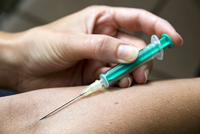 It is taken from slang who use drug addicts. They, as it is impossible to express the main problem with which doctors around the world are faced while trying to treat heroin addiction. In Russian-language literature it is the so-called «Pathological attraction syndrome to drugs», which accompanies the rapid drug addict all his life, over the years acquires an approached character, somewhat weakens, but never disappears.
It is taken from slang who use drug addicts. They, as it is impossible to express the main problem with which doctors around the world are faced while trying to treat heroin addiction. In Russian-language literature it is the so-called «Pathological attraction syndrome to drugs», which accompanies the rapid drug addict all his life, over the years acquires an approached character, somewhat weakens, but never disappears.
«Pathological attraction syndrome» It occurs immediately after the cessation of drug use arises, is a supersensular structure of dominant type and is characterized by deep disorders of sleep mechanisms, attacks of unprovoked depression, fluctuations in mood, aggressiveness and flattening emotional profile».
In order for the unprepared reader to understand how much these experiences are and what moral efforts are the drug addict not to resume the use of drugs - imagine that the usual salt and all spices disappeared from your diet and all spices. Whatever food you have tried, she remains tasteless. If you have not loved the salty - the complete lack of salt is somewhat annoying, but in a month you are ready for several salt crystals to give anything. For example, wild animals overcome huge distances, often risk their lives in search of natural salt. Imagine that the rest of my life will have to live without salt and then it will be clear the intense mental state of a drug addict, who refused heroin. The most complete description of this problem, is given in the anestzing manual (Ivana 21).
The heroin addict who has passed a full course of treatment in the best clinics abroad, or in a beautifully equipped domestic center, cannot consider itself completely healthy and needs to be rejustable observation, expensive rehabilitation, which in the overwhelming majority of cases to the complete cessation of drug use does not lead.
Incidentally, statistics indicate that 85% of patients of the total treatment and rehabilitation return to the use of drugs in less than a year. Among drug addicts who stopped using drugs without the help of doctors - this percentage is even less (5% -7%). It generates deep pessimism not only among the addicts themselves, their relatives, but also from doctors, politicians, officials. Whatever funds in the treatment - it turns out not a full member of society, a citizen and a worker, and a person forced to constantly fight himself, in other words - a drug addict in the remission. Another terrible circumstance should be taken into account; If seven years ago, the average life expectancy of the drug addict in Russia was 7-8 years old - now only 4-5 years old, and the Russians die out mainly, which dramatically exacerbates the already not brilliant demographic situation. In other words, drug addiction is a disease with 85% -95% mortality! To illustrate the above, graphics.
 Two images of the emotional space of a person obtained using high-resolution encephalography and processed by the method of called synchronization. On the left graph - a graphic image of the emotional space of an average person who never used drugs. It is clearly seen that the blue schedule of positive emotions and the red schedule of negative emotions for 200 and 400 Miliseconds are significantly different from the white line of the graphic of neutral emotions in a healthy person. The schedule on the right was obtained as a result of a study on the same method of emotional space among heroin addicts, which do not use any drugs about three years, that is, are in a state of remission. From the right schedule it follows that, in spite of the three-year break in drug use, positive emotions are perceived as neutral, simply speaking, are not perceived at all - the blue line passes next to the white. Negative emotions, as more ancient and significant for survival, are significantly different from neutral (white line), but do not reach such intensity as ordinary people.
Two images of the emotional space of a person obtained using high-resolution encephalography and processed by the method of called synchronization. On the left graph - a graphic image of the emotional space of an average person who never used drugs. It is clearly seen that the blue schedule of positive emotions and the red schedule of negative emotions for 200 and 400 Miliseconds are significantly different from the white line of the graphic of neutral emotions in a healthy person. The schedule on the right was obtained as a result of a study on the same method of emotional space among heroin addicts, which do not use any drugs about three years, that is, are in a state of remission. From the right schedule it follows that, in spite of the three-year break in drug use, positive emotions are perceived as neutral, simply speaking, are not perceived at all - the blue line passes next to the white. Negative emotions, as more ancient and significant for survival, are significantly different from neutral (white line), but do not reach such intensity as ordinary people.
In other words, the heroin addict, who refused to eat heroin, does not rejoice anything and the whole world sees in gray, in addition, he does not fully feel a normal feeling of fear, so he is not terrible; neither laws nor the police are not terrible. Thus, both graphics are not better illustrated by the pathological attraction syndrome to drugs, transferring its understanding from the sphere of psychology to the field of psychophysiology, where emotions can be registered, and not just their subjective description.
All, famous in the world, modern drugs and methods of treating heroin addiction, moreover, their all sorts of combinations and modifications are not able to change the above-mentioned statistics. Pathological attraction syndrome remains irresistible.
Many years held at the Institute of Clinical Immunology with Russian Academy of Sciences and clinical trials on a person were aimed at solving exactly the problems of overcoming pathological attraction syndrome. The developed and patented method (patent for the invention No. 2290947) is based on the infusion application of soluble products of the cells of the immune system - cytokines against the background of the psychosensory deprivation mode (insulation of the patient from any external stimuli). Gives a striking result. Drug craving disappears, emotions are restored. After many years of experiments, it was found that cytokines can be administered into the body not only intravenously. Using some anatomical features of blood circulation using a specially selected composition and equipment, they can be administered by inhalation through the respiratory tract. In this case, it is possible to avoid invasive techniques, which are very difficult in patients with greater anesthesia.
In addition, with an inhalation procedure, cytokines in sufficient concentration fall directly into the central nervous system, and the opiate system of remuneration is an anatomically localized. They freely pass the hematorecephalic barrier and create sufficient (therapeutic) concentrations at the points of the application - opiate receptors. Cytokines are special molecules having a protein and other structure that transmit information in the immune and nervous system. Currently, cytokines are considered by scientists as "Medicine 21 century". Now it is fashionable to call nanotechnology. Since the functions of the nervous system cells are regulated with the participation of cytokines, the use of drugs based on them has a pronounced effect on the psycho-emotional sphere of man, including behavioral reactions.
The basis for the introduction of cytokinotherapy into the practice of drug addiction treatment was the previously obtained data on the ability of cells of the immune system and their products (cytokines) to prevent the development of abstineate syndrome after the discontinuation of the drug in experimental animals Heroin under the structure and the action is very close to the endorphins and entefalins produced in the body - the main mediators (read cytokines) opiate remuneration system. But unlike natural endorphins, heroin is able to create ultra-high concentrations at the points of the application (opiate receptors).
If you compare your own endorphins with a key to the castle, then the heroin performs the role of coarse but effective laundering. It for a long time, if not forever changes the thresholds of opiate receptors and the latter cease to adequately react to the natural concentrations of their own endorphins. Actually this is the neurophysiological basis of pathological attraction syndrome. Cytokines There is a lot, at the moment of the Research Institute of Immunology, these combinations are selected, which in clinical trials on a person make it possible to overcome pathological attraction syndrome to drugs including a depressive component and write out after the treatment of a full-fledged member of the Company not in need of further expensive rehabilitation.
Many volunteers who have passed experimental treatment - after the use of cytokines received education, work, have children and no traction for drugs are not experiencing. Perennial clinical trials of the developed method of treatment of opium addiction, conducted by employees with RAMS, showed the achievement of persistent multi-year remission (from 3 to 8 years) more than half of the patients. For many years who used heroin, motivation has changed radically, the full emotions are restored, independent physiological sleep, abilityability. The heroin addicts after the course of treatment do not have wishes will return to the use of heroin, many get rid of even from tobacco dependence.
Pilot neurophysiological studies of the emotional space of treated cytokines of heroin addicts confirm clinical observations. Restoration of the delta and aunt rhythms of the electroencephalogram (see graphics) encourages and configures to continue experiments.
For comparison; In the leading specialized clinics of Russia and the world, real effectiveness does not exceed 5 - 15%. The absolute majority of serious specialists so far consider the heroic drug addiction to the incurable, and the pathological attraction syndrome is irresistible. (Ivananets 2001.).
For further research, it is necessary to create special conditions based on a specialized clinic. Neither the state nor the existing funds for research funds allocate. Nevertheless, a group of scientists leave no hope that their efforts and the results obtained will be in demand and as they continue to study in this direction.

